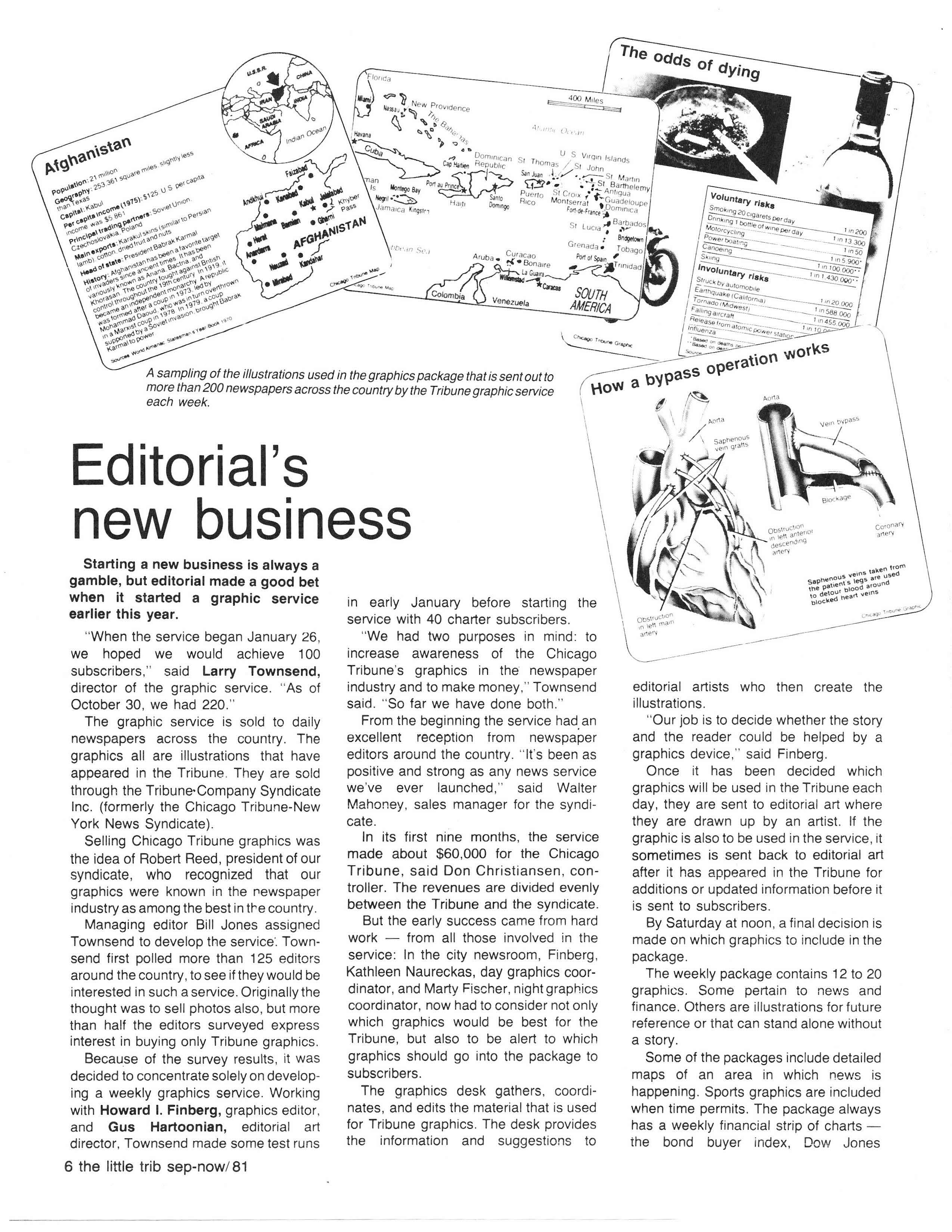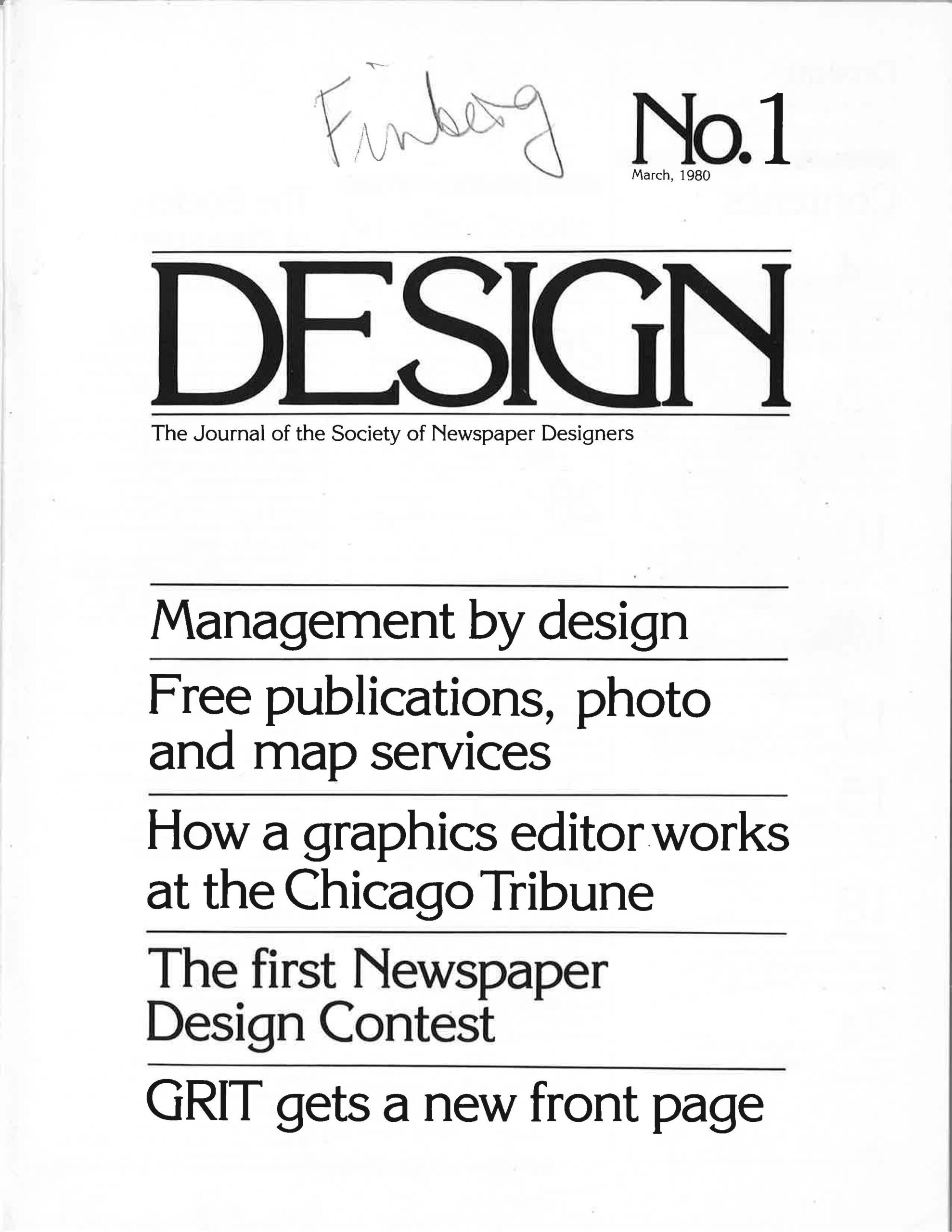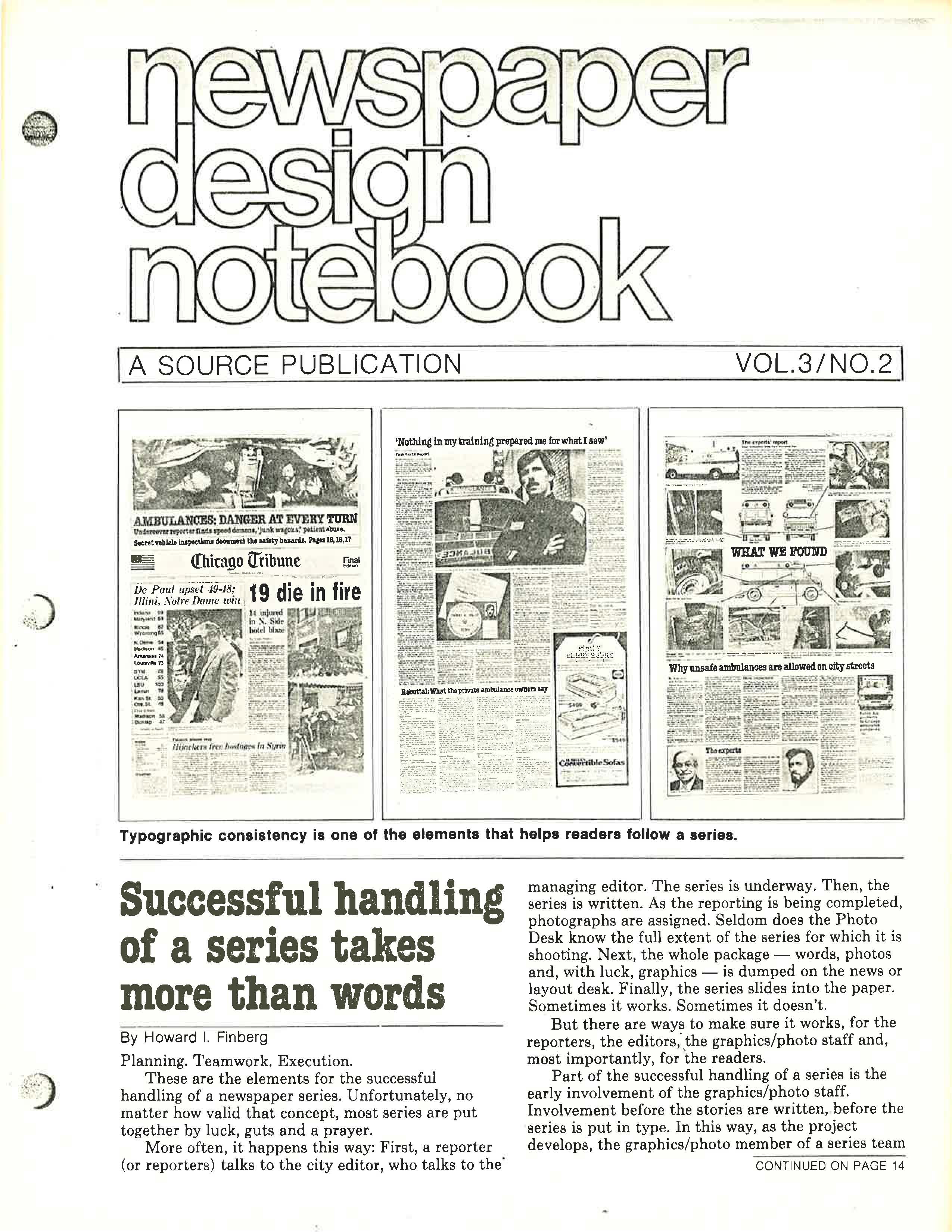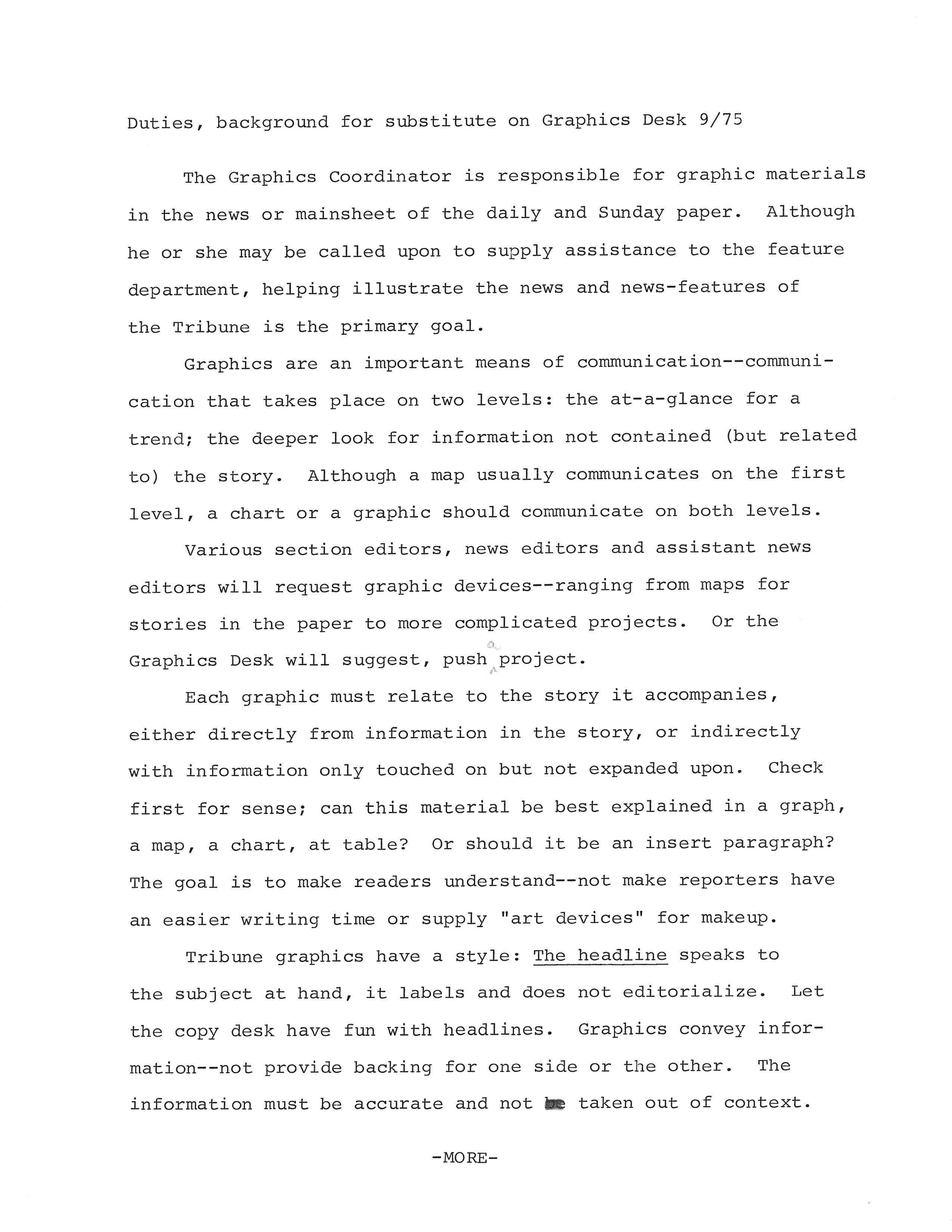The Graphics Editor Takes Charge
The Washington Journalism Review ran a story about how newspapers were turning to graphics [and graphics editors] to give readers new ways of getting information. The late 1980s and early 1990s were exciting time for graphics editors, thanks in part to the influences of USA Today and the Chicago Tribune.
Improved presentation of information is clearly a response to market demand. At the most successful papers, graphics are grounded in journalism and not in decorative arts. Content, not design, comes first, graphics editors say.
One of the article’s authors, James K. Gentry, interviewed me for the article and I ended up being the lead for the story. That is pretty heady stuff, even for me.
In 1974 assistant picture editor Howard Finberg took on the task of making the Chicago Tribune more visually appealing. “I was clearing the field of rocks and stumps,” he says of his pioneering position as graphics editor. “I don’t think anybody else was doing anything remotely similar at the time.”
Top management wanted more visual awareness from the newsroom staff. Finberg says they accomplished this through “daily evangelizing.” He wrote his job description as he went along. A good deal of what evolved was acting as liaison between the newsroom and art department.
What interests me about the article 30 years later is how the newspaper graphics editor job was a catalyst for change. Graphics editors were the change agents in many newsroom. Today, change agents, if there any left, are working in online departments.
Graphics have mostly disappeared in today’s newspapers — victims of lack of space, fewer artists and, perhaps, the disappearance of the graphics editors job. Gentry and his co-author, Barbara Zang, conducted a survey of newspapers about the graphics editor role in newsrooms. It would be interesting to do another survey to see what remains of the “informational graphics revolution.”
Gentry and Zang concluded the article with an interesting observation about management:
Redefinition of the manner in which news is presented will demand newsroom managers who can function in a constantly changing environment. “The better managers adapt, the others don’t,” says Dave Doucette of the Salinas Californian. “The success of managers, of papers, means the ability to change.”
Finberg, the self-proclaimed old man of graphics editors. says the next wave of graphics editors must be able to edit tighter and make decisions faster. “We have to make the best use of finite space,” he says. “Maybe a whole new type of editor is needed for the future.”
I guess we still need that new type of editor.
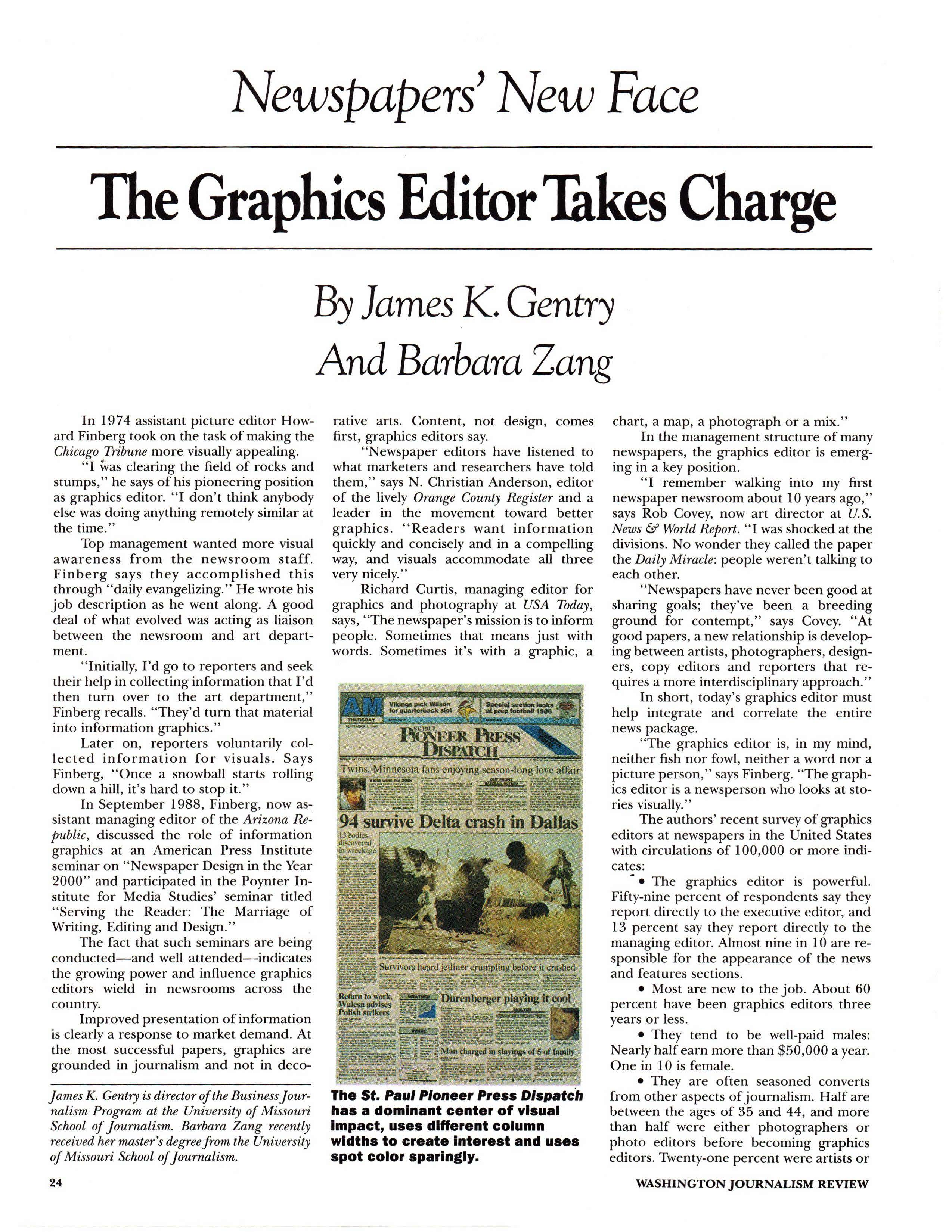
Washington Journalism Review article on graphics editors

